We know that safari holidays in Africa are an amazing experience, but when is the best time to visit Masai Mara Kenya?
Our travel guide will help you find out just that and based on your preferences such as what activities you are keen on doing like wildlife viewing, or how many days you plan on staying there, etc. you will find a season or a month that will work better for you.
So keep reading to get all the insights into the best time to go to Masai Mara.
** Disclaimer: This post contains affiliated links which means that purchases made through these links reward Bey of Travel a small commission without any additional charge for the purchaser.**
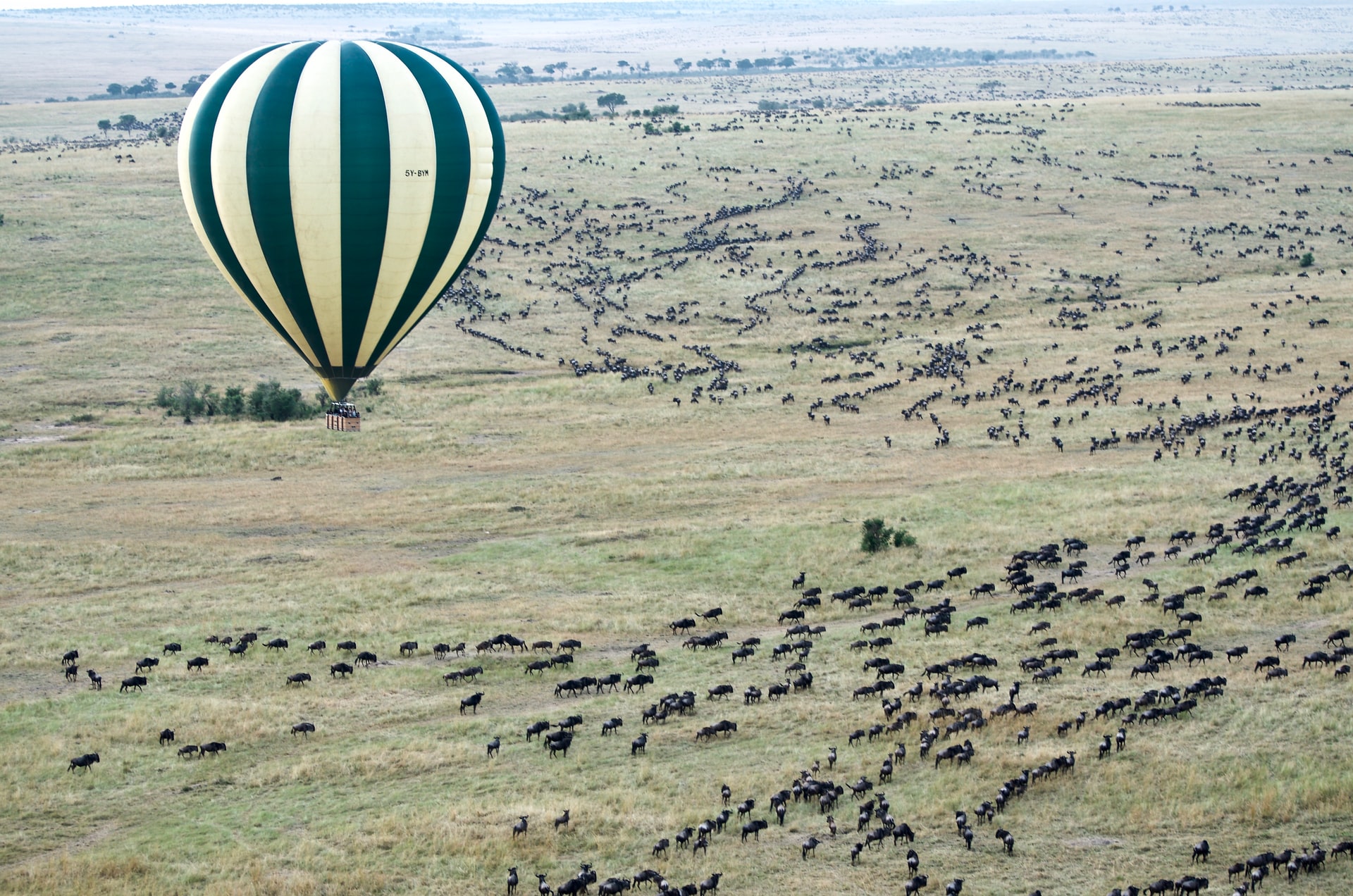
Best time to visit Masai Mara Kenya: Seasonal Breakdown
The Masai Mara National Reserve in Kenya is one of Africa’s most popular safari destinations and for a good reason. It has a wide variety of wildlife including lions, leopards, elephants, giraffes, and rhinos. However, it also attracts hordes of tourists during peak season which means that you have a better chance at seeing animals outside peak season than during this time period.
We recommend visiting between mid-September through late October or early January through February if you’re looking for an off-season experience without sacrificing too many game viewing opportunities.
Now, let’s break this down into detail below:
Seasons in Masai Mara
Masai Mara Kenya has two distinct seasons: rainy and dry.
Rainy Seasons:
There are two rainy seasons. The main rainy season is from early March through May when rains are very common. The heaviest rainfall happens in April, which can also lead to flooding.
Short rains – There is another smaller rainy season that takes place in November and December. It’s pretty light compared to the ones before and after it so we still consider it part of the drier season.
You should avoid visiting Masai Mara during high rainy months because generally, there’s more rain which means fewer game viewing opportunities. Even if it does stop raining for a few hours to let you explore the park, it tends to get really cold at night so you’ll be better off visiting another time period.
Dry Seasons:
Although there are no drought or very dry seasons in Masai Mara, there are a few months where the rainfall is lower, which is considered as a dry season. It is typically from late July through October.
The last few weeks of December and the first couple weeks of January can be considered part of the “dry” season as well. Since it’ll be pretty hot during this time period, we would recommend visiting in the second half of January through early February because it’s more off-season and will give you better odds at seeing animals.
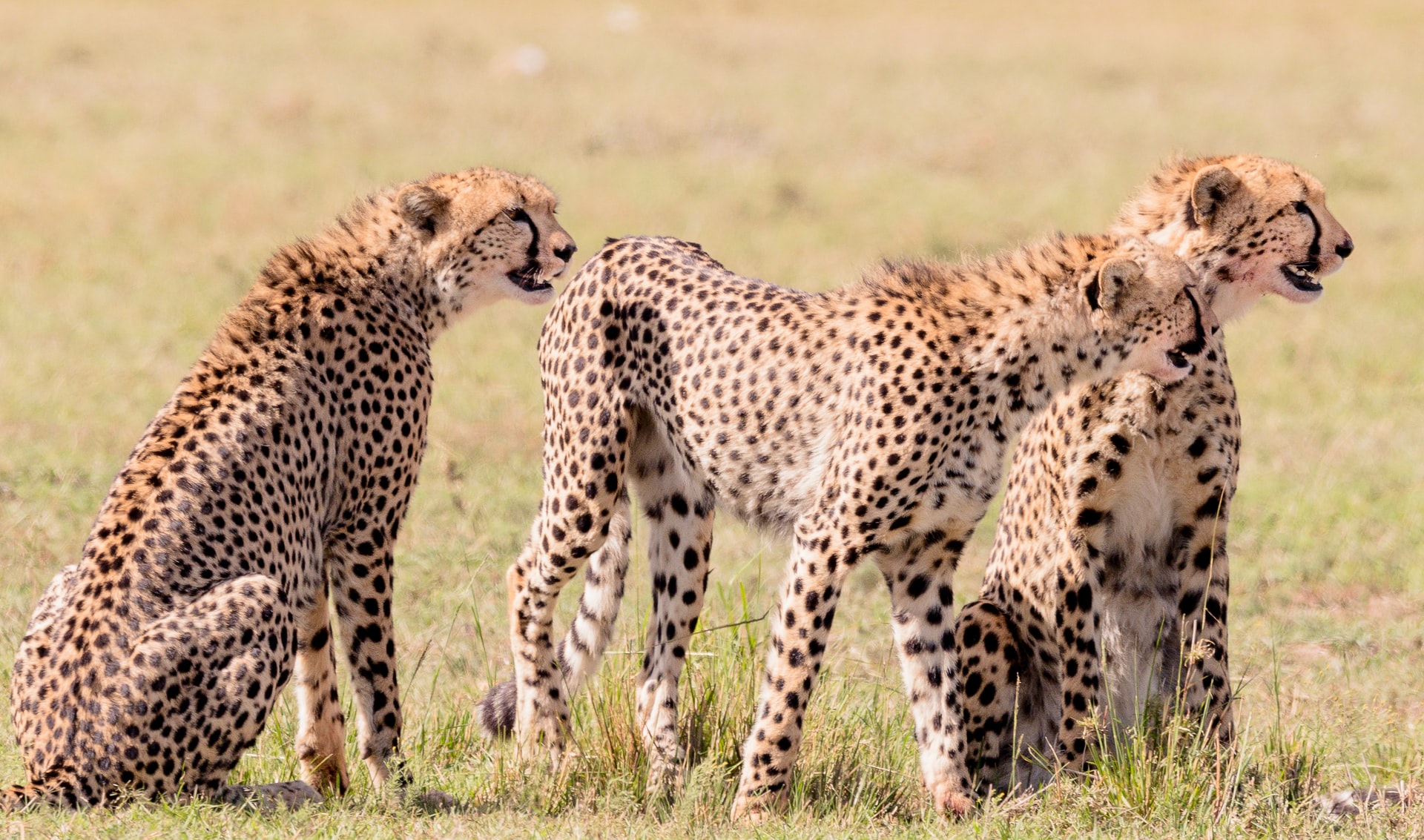
Temperatures in Masai Mara
Masai Mara National Park is situated in southwest Kenya. Overall the temperatures throughout the year are warm, with cool nights.
During the dry months, the temperatures are slightly higher during the day. These are the months from October to March. Rainy months are slightly cooler (from June to August).
Note that at night, temperatures will drop, and it will be chillier, so pack enough woolens.
READ NEXT – HOW TO PLAN A SAFARI IN MASAI MARA – KENYA
Best time to go to Masai Mara – by month
Here is a monthly breakdown of each month in Masai Mara and its weather
January – February: This is considered to be a good time to visit Masai Mara for a safari. The weather is fine (dry season), with the occasional showers. Many love to visit the national parks in these months to combine winter breaks or to escape the winter where they live, so expect safari prices to be higher, and crowds.
March-May: These spring months are the rainy season in Masai Mara. April, as mentioned above, is the wettest month. During this time, the safari trails will be wet, and you will experience rain often. If you are planning a short 3-day safari excursion (with limited time), we say that you skip these months due to the weather.
June – August: The temperatures from June to August are pretty warm, and there are few rainy days. July is the driest month of the year.
Temperatures can go as high as 25 degrees Celsius (77 degrees Fahrenheit) around this time, but it drops down to single digits in the night. This is considered a high season in Masai Mara, particularly from July onwards (to November).
September – October: September to October is the best time to visit Masai Mara. The weather is mostly dry, with little to no rain. Daytime temperatures in October are warmer at 27 degrees Celsius (81 degrees Fahrenheit). Late evenings and mornings can be chilly.
November – December: November is another good month to visit Masai Mara. Rains are rare during this time other than short showers. The same goes for December.
In a nutshell, these are the best times to go to Masai Mara for a safari,
- Best time to visit: June to October, January to February.
- High season: July to November, January to February (some of the parks might get very crowded, especially the Masai Mara and Lake Nakuru)
- Best weather: June to October.
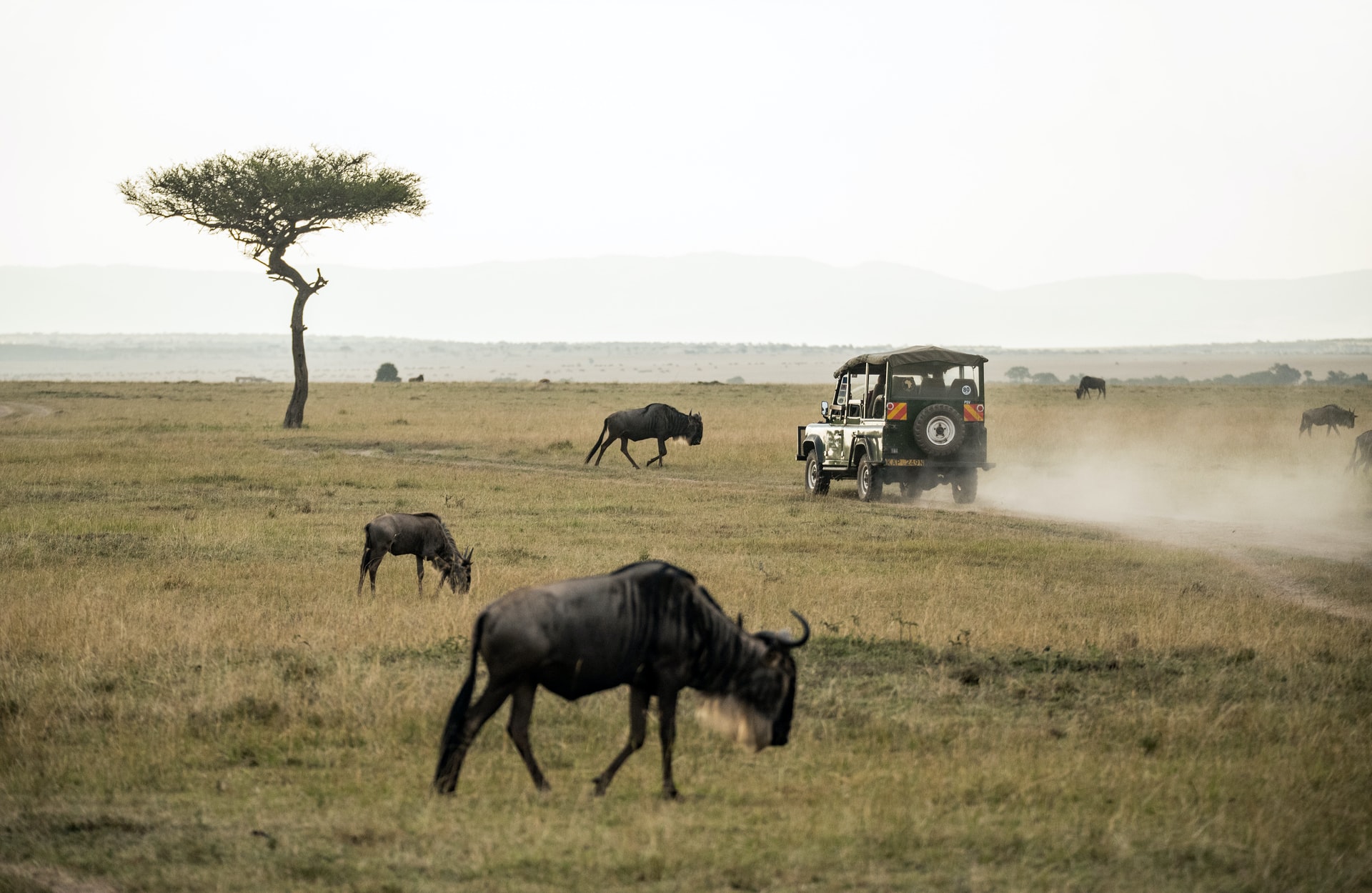
Our recommendation is June to October for an African safari
Based on our trip experience and research, I recommend visiting Masai Mara from June to October.
During these months, the weather is generally very nice with mild temperatures throughout most of the day. You’ll still need to apply plenty of sunscreens though since this part of Africa is closer to the equator so you’ll be more exposed to the sun.
This is also the time of the year when you’re more likely to see animals. Since it’s not flood season, they’ll be easier to spot. Every once in a while, you might run into some rain showers but for the most part, it tends to remain dry during these months.
The Great Wildebeest Migration usually reaches the Masai Mara in July and the herds remain in the reserve until October, before making their way back to the Serengeti National Park in Tanzania.
As it is a popular time to visit, expect flights and safari excursions or tours to fill up quickly, and hence plan for it ahead of time, and make reservations as soon as you are sure of your trip!
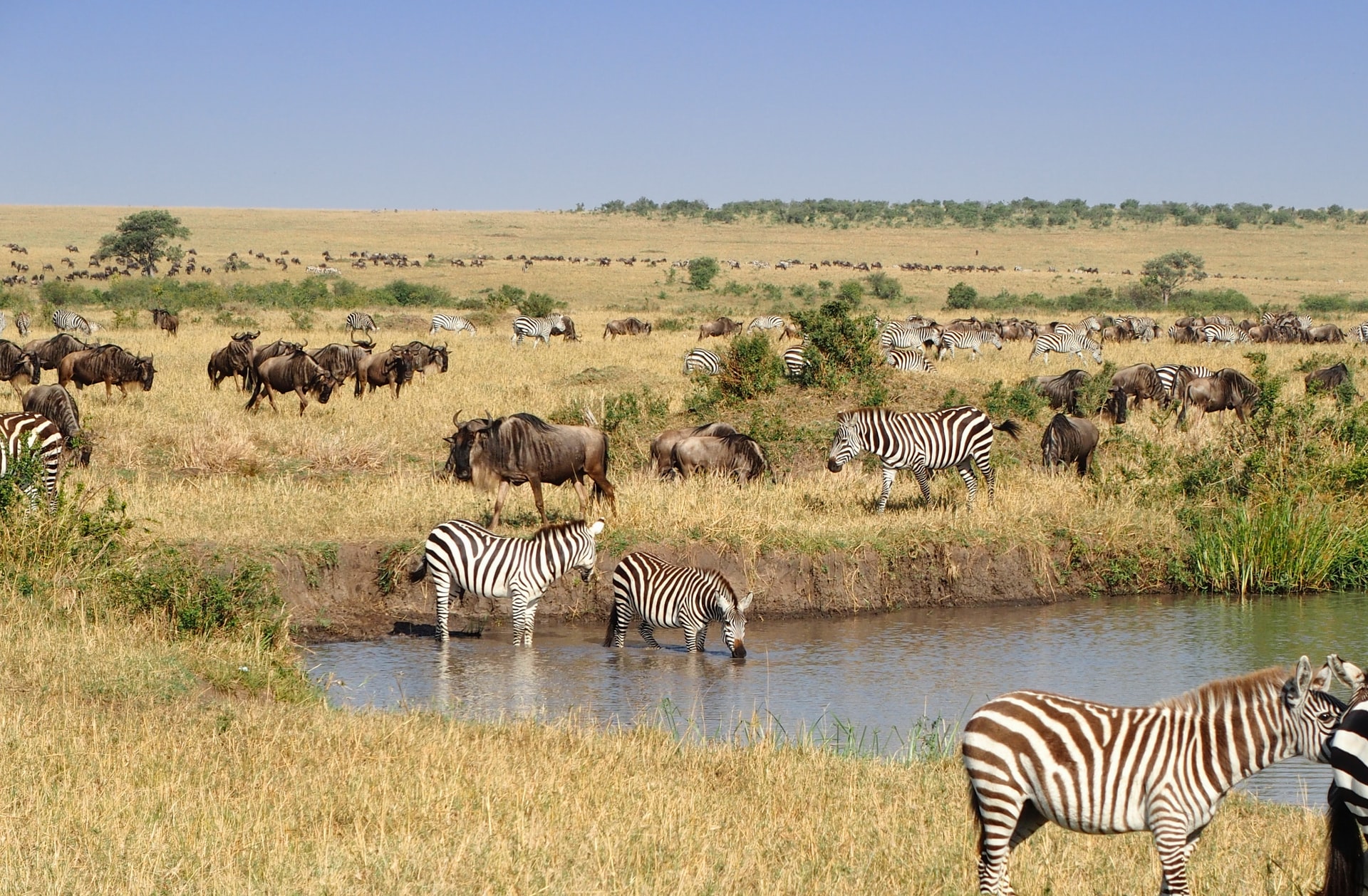
Typical low season in Masai Mara for safari
Low season: March to May
From March to May, rains are a high possibility and so it is not a popular time to visit Masai Mara. Rains might dampen the spirits of camping, and safari due to flooding. Animals might be hiding as well.
During this time, some excursions still continue as normal. At times you might secure a good deal, but it is completely up to you to plan a visit as it rains, and there is less possibility of the game sightings. These are some of the major considerations for Masai Mara safaris for many travelers.
When not to go to Masai Mara for a safari?
Worst weather: March to May
Rains are at their peak in March and April (take May into that time frame as well). During this time due to flooding, some roads may be in poor conditions for driving and might lead to safari cancellation/interruption.
High rainfall in March and April makes access to camps and lodges difficult, and due to the challenging weather, they could also be closed down until May.
On the positive side, the park gets fewer visitors, and everything is green and fresh!
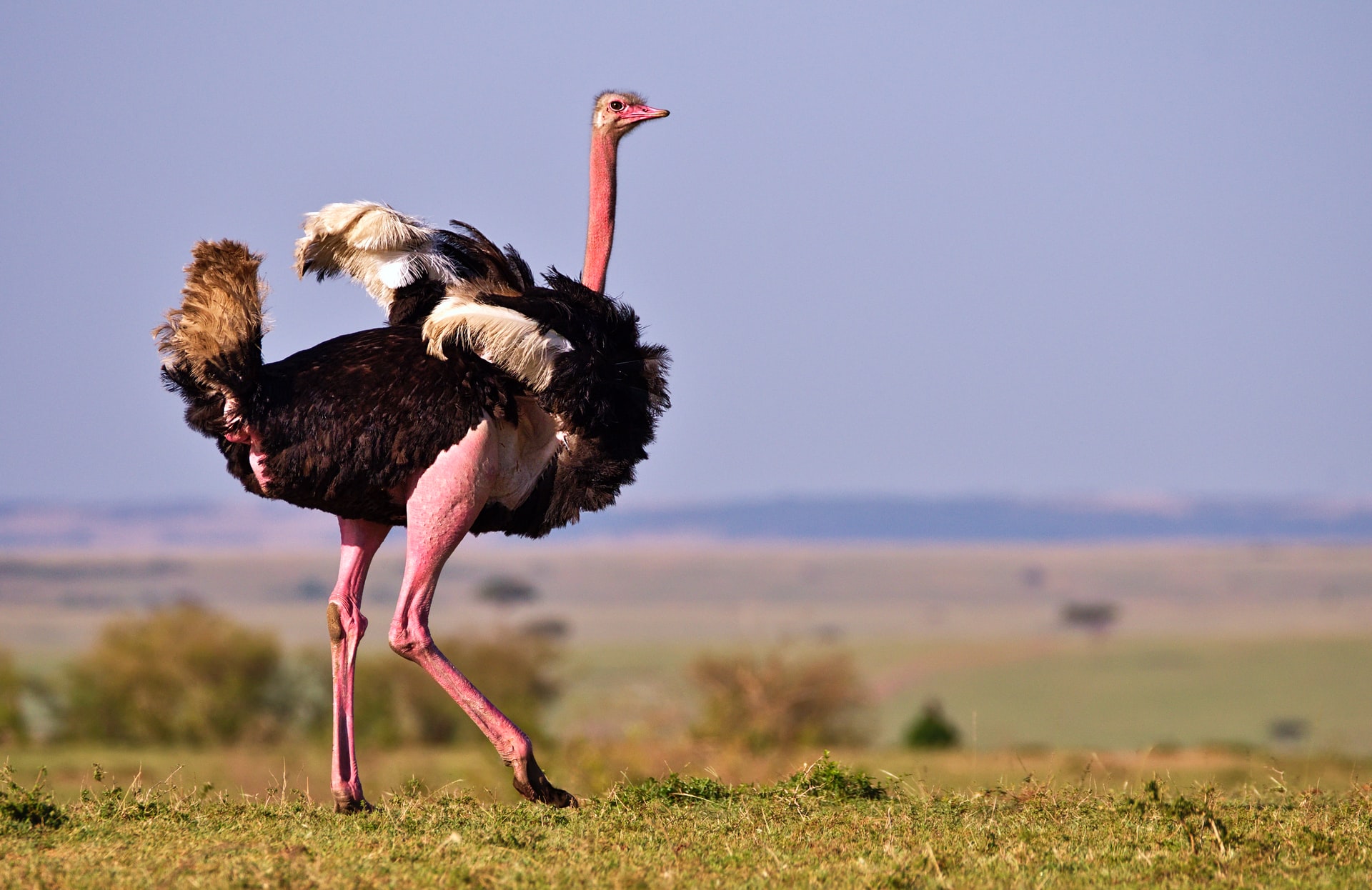
More Masai Mara Travel Tips and Kenya Safari
From enjoying safari at the Masai Mara National Reserve to Kruger National Park in South Africa, you will find these general tips useful!
What to pack for a safari trip in Masai Mara?
If you are visiting Masai Mara in the optimal months suggested above, then I highly recommend packing the following items,
Warm clothes
Masai Mara is not as cold as you think it would be, but the temperature can drop significantly during the night. So make sure to pack warm clothes!
We suggest packing at least one sweater even if you are only going for a short tour since it gets chilly easily.
Sunscreen and sunglasses
Even though you might not be on the equator, it is still very sunny in Masai Mara. So make sure to pack lots of sunscreen and sunglasses or hats.
Sun-smart essentials
It is THE SAFARI, after all, so don’t forget sun-smart essentials like long sleeve shirts, pants/trousers/skirts/dresses, hats, and other things you can use to cover yourself up.
Remember that Masai Mara is not as hot as the Sahara Desert so it’s still pretty chilly at night!
You can also buy clothing that provides UV protection if your skin is prone to sunburns, and/if you are not used to warmer or hotter temperatures.
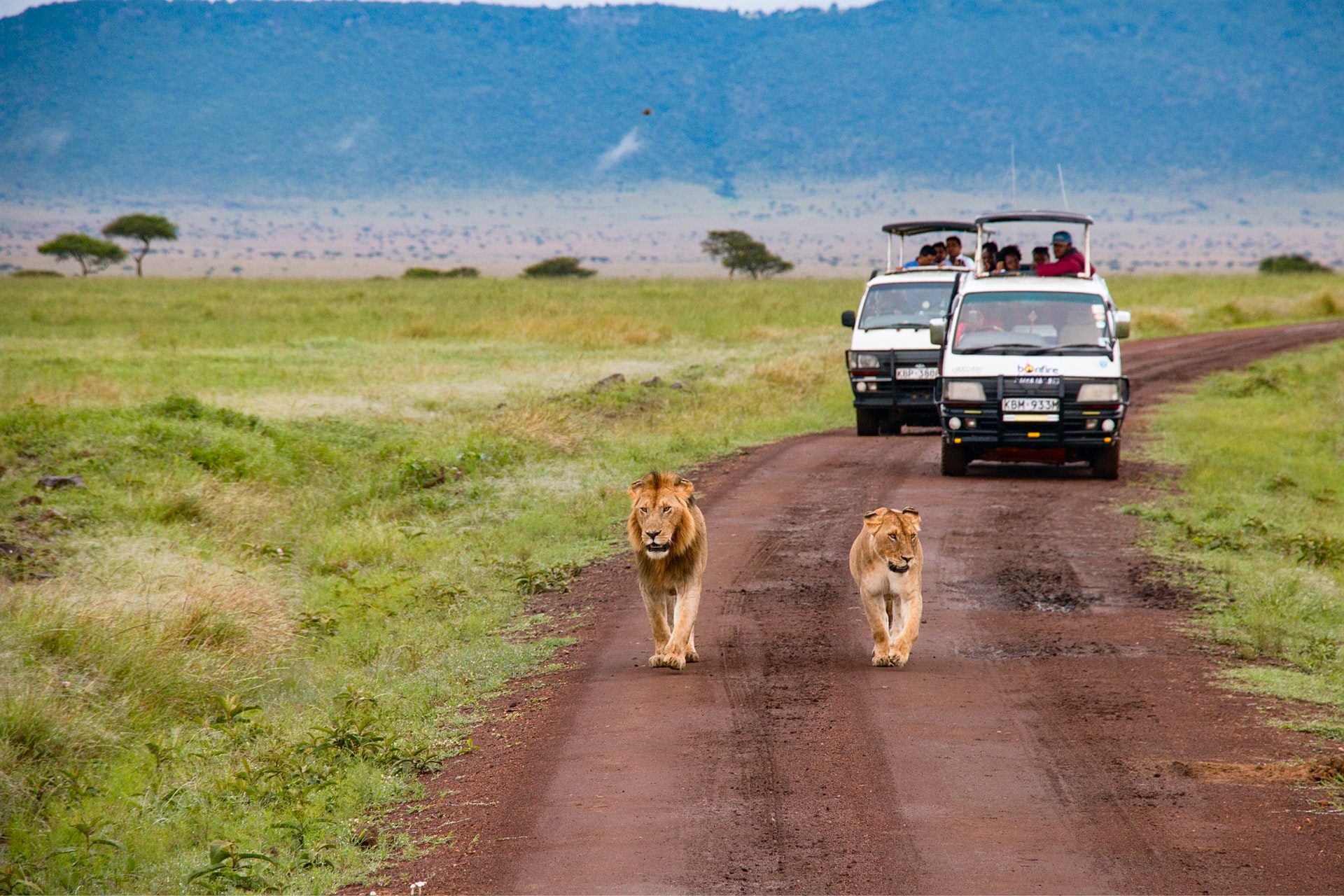
Comfortable and closed-toe shoes
I also recommend wearing closed-toe shoes due to animals often wandering around. Walking boots are your best bet if you’re planning on hiking through the park. When in doubt, bring a pair of trainers or shoes that can be easily slipped on and off.
Bring lots of stuff to keep you busy!
Don’t expect too much from Masai Mara when it comes to fun activities since you’re mainly there for the safari, but it is always better to be safe than sorry.
So make sure to bring some cards/games if you can’t live without them, your phone battery charger (or at least your phone power bank), books, laptops, something to read or write on if you’re feeling bored.
However, don’t rely too much on technology, try keeping some activities like a travel journal and a pen inside your bag.
Electronics
Carry your camera/camcorder/go pro (if you have one), batteries for your phone, and other devices if necessary.
Sim card
Don’t forget your local sim card (if you’re using a Kenyan mobile service provider).
If your phone does not work in Kenya, make sure to call your mobile company and ask for an international roaming plan to be activated before you leave for Kenya. You can also get a Kenyan sim card and data upon your arrival in Kenya.
Essential cash and documents
If you’re going out on a safari or a tour, keep cash in small denominations as well, since you might not be able to withdraw it from an ATM during your stay in Masai Mara.
Don’t forget to add trip cancellation, and travel medical insurance to your tour.
Sounds like a lot, but if you pack smartly, it should be easy enough to carry all these things around. Remember that you will need to walk (with your stuff) on long safaris, so make sure to pack light!
If you are planning a trip in the low seasons when rains are common, do ensure you have waterproof shoes and clothing (outerwear) with you.
Add a base layer for use at night, when temperatures drop.
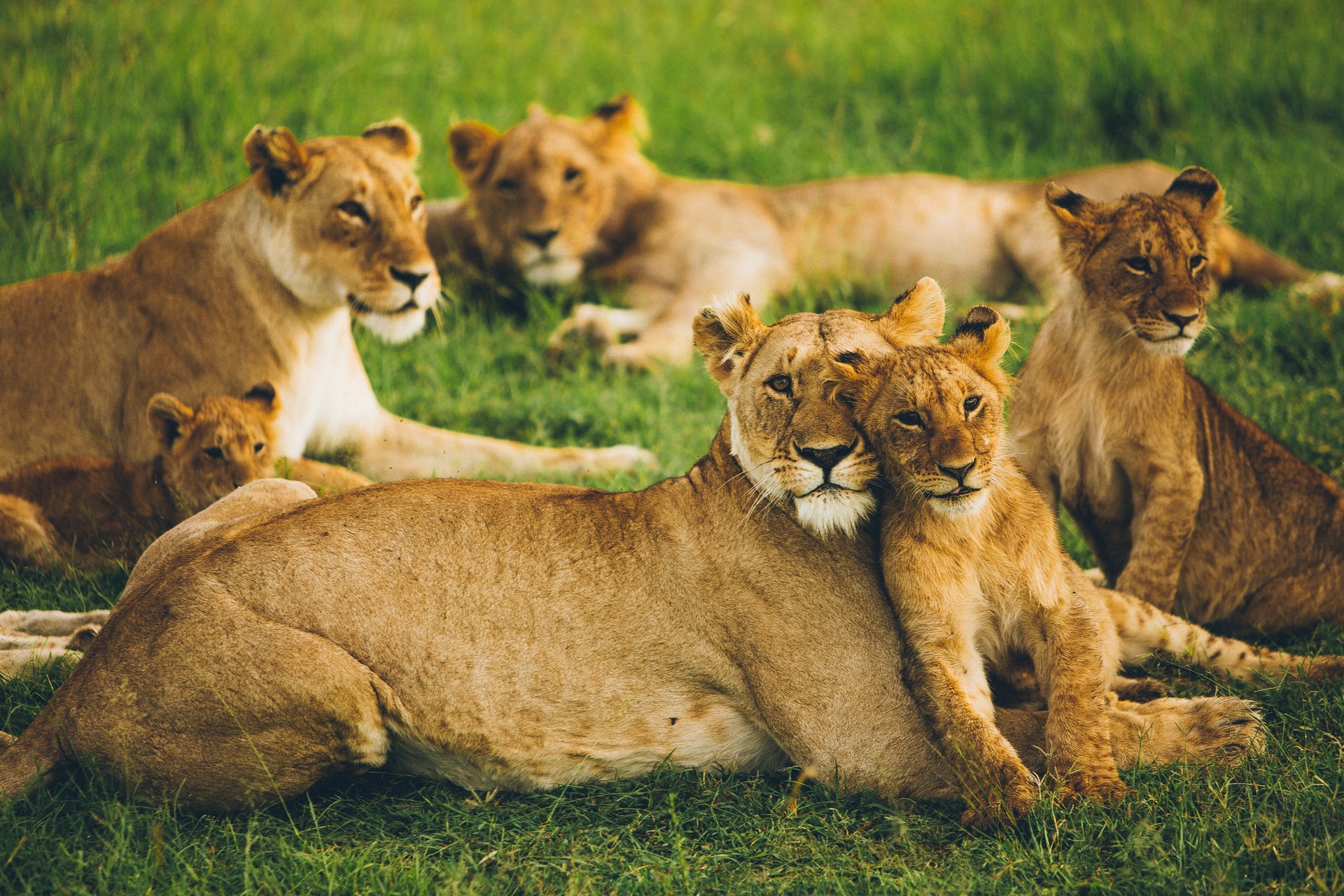
Is Masai Mara safe?
Yes, Masai Mara is completely safe. Just like any other place in Kenya or Africa for that matter, you should follow the safety precautions and common sense when it comes to traveling there. Areas where tourists, local people, and animals often coexist are often the safest.
The National Park Reserve is well maintained and guarded. In the event of any natural or man-made dangers you would be warned by local authorities or your tour provider – so adhere to those regulations and guidelines.
If you’d like to contact local authorities or embassies during emergencies, make sure to know their numbers ahead of time.
Lastly, avoid carrying lots of cash on you, but if you do need to carry some, make sure it is divided between your belongings so that if something does happen, only a few bills will be lost.
So when should you visit Masai Mara for the perfect safari getaway?
You can visit Masai Mara any time of the year, but there are certain times that will be better than others. If you’re not one for crowds, then visit the National Park in May. Just be prepared for the rainy season.
Avoid March and April as rains are frequent, and sightings of the game will be rare.
If you are looking to see wildlife in its natural habitat, then it’s worth visiting during the migration season when animals come down from the mountain with their young and migrate towards waterholes.
Mark the months from June to October as the best time to visit Masai Mara as this is the dry season.
With these things in mind, happy safari-ing and travel!
We hope you’ll have a wonderful time during your stay in Masai Mara. Remember to take lots of pictures and videos!
PIN – Best time to visit Masai Mara
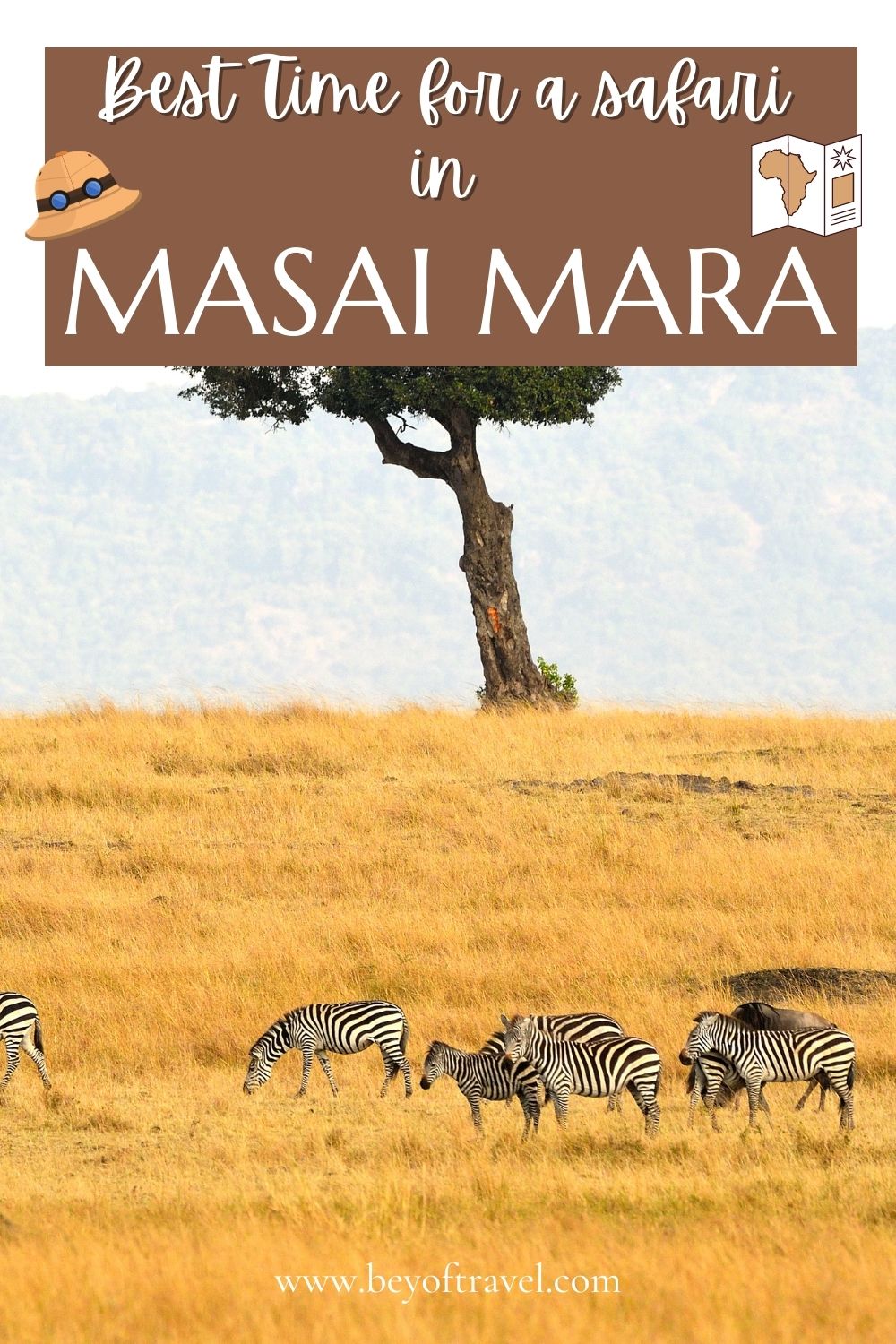

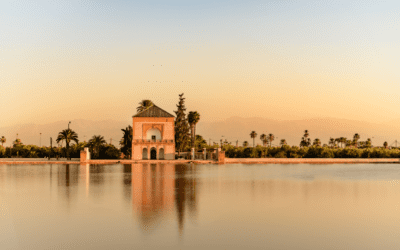
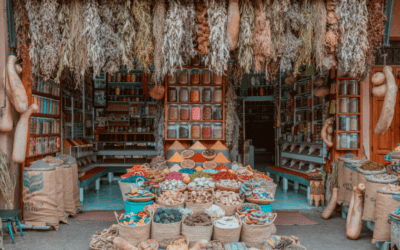
0 Comments